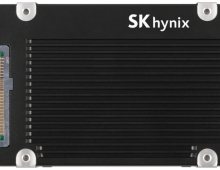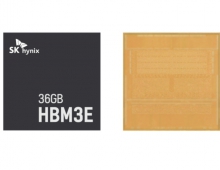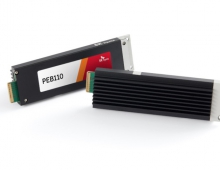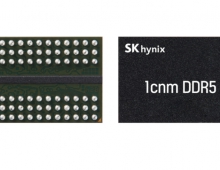
Elpida Develops Ultra-thin Mobile RAM Package
Japanese supplier of Dynamic Random Access Memory (DRAM) Elpida Memory, Inc. and its subsidiary, Akita Elpida Memory, have developed the technology to mass manufacture a 0.8mm four-layer DRAM package, the thinnest memory device in the DRAM industry.
The super thin package consists of four low-power consumption 2-gigabit DDR2 Mobile RAM chips and was assembled using the Package on Package (PoP) technology. The package is an eco-friendly DRAM solution that could enable the development of thinner smart phones and tablet PCs.
Elpida Chief Operating Officer and Head of DRAM Business Unit Yoshitaka Kinoshita said: "Given the 1.0mm thickness of previous four-layer PoP made by Elpida and competitors, customers have been using two-layer 0.8mm packages. Thus, for systems that needed an 8-gigabit DRAM density at 0.8mm thickness, the solution has been two layers of 4-gigabit products. But now that a four-layers of 2-gigabit products increases the choices, more flexible system design is possible."
Kinoshita also added: "Based on this new technology for mass manufacturing thin PoP products, which brings together Elpida's small chip Mobile RAM technology and Akita Elpida thin-chip processing and molding technology, a four-layer 0.8mm ultra-thin package has been achieved. Also, the yields and cost are the same as for existing 1.0mm products. The next step is an ultra-thin 0.8mm PoP consisting of four layers of 4-gigabit products."
Elipda expects to begin volume production of the four-layer 0.8mm PoP products in the July-September quarter of 2011.
Elpida believes the four-layer package can respond to the need for thinner memory chips, with more memory density and flexible configurations.
PoP technology has been used to assemble and test different semiconductor chips in individual packages. These packages are then stacked atop each other to form a PoP configuration. Since PoP technology enables reductions in mounting space and wire length, the technology is seeing rapidly expanding applications in the mobile device market.

Elpida Chief Operating Officer and Head of DRAM Business Unit Yoshitaka Kinoshita said: "Given the 1.0mm thickness of previous four-layer PoP made by Elpida and competitors, customers have been using two-layer 0.8mm packages. Thus, for systems that needed an 8-gigabit DRAM density at 0.8mm thickness, the solution has been two layers of 4-gigabit products. But now that a four-layers of 2-gigabit products increases the choices, more flexible system design is possible."
Kinoshita also added: "Based on this new technology for mass manufacturing thin PoP products, which brings together Elpida's small chip Mobile RAM technology and Akita Elpida thin-chip processing and molding technology, a four-layer 0.8mm ultra-thin package has been achieved. Also, the yields and cost are the same as for existing 1.0mm products. The next step is an ultra-thin 0.8mm PoP consisting of four layers of 4-gigabit products."
Elipda expects to begin volume production of the four-layer 0.8mm PoP products in the July-September quarter of 2011.
Elpida believes the four-layer package can respond to the need for thinner memory chips, with more memory density and flexible configurations.
PoP technology has been used to assemble and test different semiconductor chips in individual packages. These packages are then stacked atop each other to form a PoP configuration. Since PoP technology enables reductions in mounting space and wire length, the technology is seeing rapidly expanding applications in the mobile device market.






















